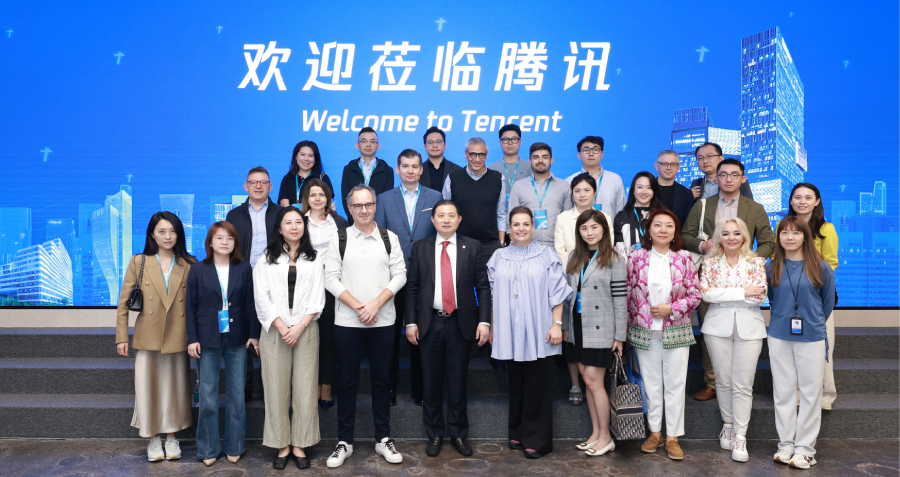Given the unique challenges presented by the China market to foreign businesses, the importance of strategic thinking cannot be understated
By Edward Tse, professor of Managerial Practice at CKGSB
China is still a target for the business portfolios of many major global companies, despite a myriad negative factors such as the pandemic, geopolitical tensions and supply chain disruptions. Foreign direct investment (FDI) remains an important part of China’s overall economic landscape, and the country’s leaders remain eager to encourage foreign investment in spite of the headwinds.
China’s role in the world is evolving, with rapid and complex changes also taking place within the country itself. The evolving governance system comprising both top-down state planning and a vibrant business sector often bridged by resourceful local governments, has created a unique governance approach. Developed against the backdrop of an ancient civilization and culture, this approach has created a context that very few MNCs have been able to understand and appreciate. China’s governance approach is changing to advance its own definition of modernity while dynamically striking the right balance across multiple national priorities.
The evolving China context
When MNCs first entered China, they thought they could simply “plug and play” what they did in other parts of the world, and in a small number of cases this worked, for a while. However, they soon began to realize the need to adjust to business dimensions as manifested in China.
The China context is characterized by changes to policies, technology and demand patterns, in ways that are often complex and discontinuous. Beijing’s policies often lead to new directions and priorities for the country, creating new opportunities for businesses and investors alike. Technology plays a major role in China these days and is an enabler for businesses and entrepreneurs to innovate and develop new business models. These factors, as well as shifting demographics, lifestyle pursuits and brand preferences, mean that demand patterns in China are changing rapidly.
As the market has expanded, Chinese competitors have emerged across the board and in many cases, have become serious competitors to foreign MNCs. In some sectors such as e-commerce, online payments and logistics, Chinese players have taken dominant positions.
In the past, Chinese companies, many of them state-owned enterprises enjoying preferential conditions, had strong positions only in a few sectors. But Chinese companies are now exhibiting strengths and outmatching marquee Western MNCs in many more areas of the economy. One critical reason is that Chinese companies are usually better able to anticipate changes and disruptions brought about by shifts to the key drivers of business here well before the MNCs do.
The third way
The entire China context needs to be considered when companies think about their strategies.
Decades ago, Western corporate strategists only thought about business strategies in two ways: “diversification”—building conglomerates with portfolios of vast and often unrelated businesses—or “focus”—building solely on the company’s own “core competences.” Since then, these two concepts have both shaped strategic decision-making and how the capital market evaluates companies.
But, neither of these two concepts can fully explain the corporate growth phenomenon in China—and of some tech companies on the West Coast of the US. In 2014, I proposed an alternative way of strategy formulation in which companies go through “multiple jumps” from an existing scenario to a new opportunity even without having the necessary experience and capabilities. Under this approach, corporate leaders taking this approach constantly evaluate new opportunities versus the extent to which they can build capabilities in the new area, either by themselves or through partnership “ecosystems.” This is what I call the “Third Way of Strategy” which bridges the theoretical gap between the first two concepts by explicitly considering both market opportunities and internal capabilities. The Third Way has become prevalent as new opportunities emerge rapidly in China as policies, technology and demand patterns evolve.
By using the “multiple jump” strategy, many local companies have crossed over from one sector to another to seize new opportunities by leveraging underlying technologies such as the internet, and now increasingly, artificial intelligence, the internet-of-things, 5G, blockchain and cloud computing. They may lack many of the capabilities needed in the new space but they will try to meet these requirements, either internally or through partnerships.
Local companies were the first to grasp opportunities in this way, but foreign companies too are beginning to follow the same approach, most notably in internalizing the fact that market development in China is often non-linear, discontinuous and multidimensional.
The organizational manifestation of the “Third Way” of business strategy is, therefore, business ecosystems, which are developed in order for companies to close these capability gaps as they “jump” from sector to sector.
What localization?
Foreign MNCs have been aware of the need for localization for a long time. Their initial version of localization, however, was simply to hire some local people, while non-locals still controlled major decision-making, including strategy.
But this has been evolving. Many MNCs now hire a “Head of China,” usually a Chinese person with a sales or marketing background, and their priority is to meet sales targets usually set by global headquarters. Some multi-business unit companies designate someone as a “China CEO” or “Chairman” whose focus is largely to build and maintain government relationships, both local and central, and with Chinese joint venture partners where applicable, besides being the public face of the company in China.
Neither of these leadership strategies is ideal for the China market. The operations-focused leadership concentrates on achieving financial targets for the company’s business based on “what was defined and agreed upon.” These managers are typically heads-down, linear, incremental and KPI (key performance indicators)-driven. The ceremonial leadership structure focuses on relationships, events and ceremonies. They may be involved in business peripherally, certainly not at the core. The headquarters of such companies are typically handicapped as they are at a distance from China, and lack adequate understanding or even familiarity with China’s context.
Numerous MNCs have hired many Chinese locals, while also transferring in people from overseas, but capability gaps still exist, especially in interpreting the evolving China context. Many struggle to realize their full potential here, not only in terms of revenue and supply chain efficiency, but also increasingly from the knowledge and expertise to be derived from China’s innovative business environment. Some have been taken by surprise by new policies, new innovations and the emergence of new competitors, and a simplistic approach to localization and assignment of some expatriates to China is not sufficient to ensure that MNCs can adequately achieve their purpose.
Common pitfalls
While the ability to think strategically is a key requirement for MNC managers in China, not many MNCs have been able to effectively develop these kinds of skills among their managers on the ground. Without a basic level of strategic thinking ability, companies face a number of common pitfalls.
1. Missing out on discontinuous opportunities (or threats)
As opportunities (and threats) often arise unexpectedly in China, an operations-focused, linear approach isn’t ideal. While being operations-focused is critical in achieving short-term results, the ability to strategically anticipate how and when the next discontinuity would manifest itself is crucial to avoid missing new opportunities or threats.
2. Inadequate peripheral vision
A corollary to Point 1 is why and how operations-focused managers often miss situations that may be emerging at the fringe of the company’s business as they focus only on its core strategies. For example, many MNCs tend to focus on the premium segments in China, but often a “mid-market” segment will emerge. MNC managers are often slow to respond to mid-market opportunities, which are often served better by quickly emerging local competitors.
3. Missing out on new competitors
Initially, MNC managers focused upon operations typically ran into local competitors within the same industry and already known to the MNCs. However, as the China context evolves, new local competitors now often emerge “from nowhere in particular.” These may be smaller local companies who were able to see the emerging market opportunities, or they could be local players who are already successful in adjacent sectors. Often these competitors bring with them ecosystems and capabilities that the incumbent players may not have and as such can rewrite the rules of the game.
4. Needing a better understanding of how to build capabilities
MNCs tend to regard capabilities as things they internally develop and possess—sometimes gained through mergers and acquisitions or joint ventures. Nonetheless, MNCs generally believe capabilities should be internally owned. This is a heritage derived from the “core competence or capabilities-driven strategy” concept. As mentioned above, a “multiple jump” strategic approach in a dynamic market like China often requires companies to form collaborative partnerships to fill the capability gaps as they jump from one opportunity to another. Commonly called “ecosystems,” formation and maintenance of these collaborative partnerships is increasingly a key part of corporate strategies in China and for China in the global context also. Operations-focused MNC managers often lack a prospective and proactive view and fail to build the right ecosystems for their companies.
Key ideas
The role of a leader of China operations of an MNC varies depending on how it is defined by the MNC itself, the most primitive of which is simply a ceremonial facilitator. But the role of the China head evolves as the MNC internalizes the strategic importance of that position. As a full-fledged business leader of the company, the China head has to fulfill a range of responsibilities, not only for the P&L but also for thought leadership.
Given the quickly evolving China context which itself governs how and in what ways MNCs should act in China, it’s critical that MNC executives in China possess a certain level of “thought leadership” capability.
Shane Tedjarati, the recently retired President of Global High Growth Regions for Honeywell, a large US industrial conglomerate, and the architect of its China strategy, stresses the importance of viewing and treating the China team as a brains trust. By that, he means that his China managers cannot simply assume “business as usual” and just execute orders. The local team has to be able to fully understand and appreciate the strategic dynamics of the market and be able to propose viable solutions to the global headquarters and business units.
Strategic thinking ability enables local managers to better communicate the conditions in China to the relevant people at global headquarters. More often than not, seniors at global headquarters do not have the time or access to fully understand the situation on the ground. Therefore, accurate and complete input from local managers is critical. More often than not, there is a breakdown and a certain degree of inadequacy in such communications, leading to many of the common pitfalls mentioned above.
Needless to say, operational responsibilities are also very important for the China heads of MNCs. However, downplaying strategic thinking and simply being operations-focused will not suffice for any MNC to become sustainably competitive in China. Both are required. More MNCs have now come to realize this and are willing to make the right investment to build this capability. Given the importance of China and availability of homegrown talents on the ground, in due course we expect a consequent shift in the landscape.




















